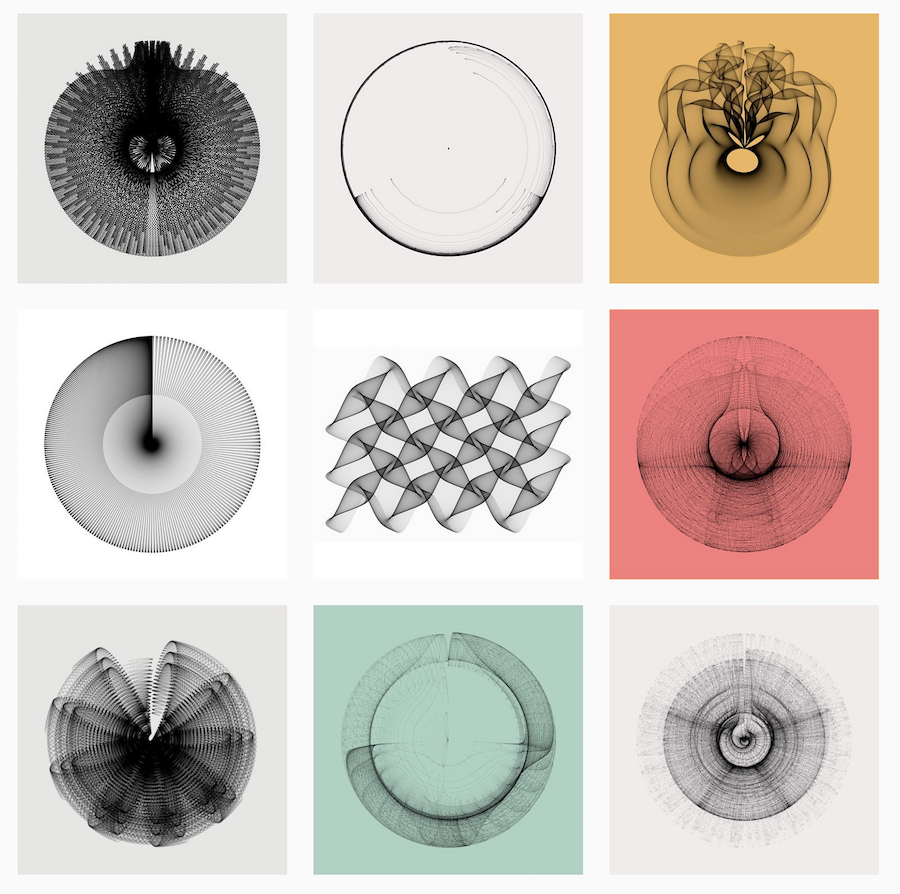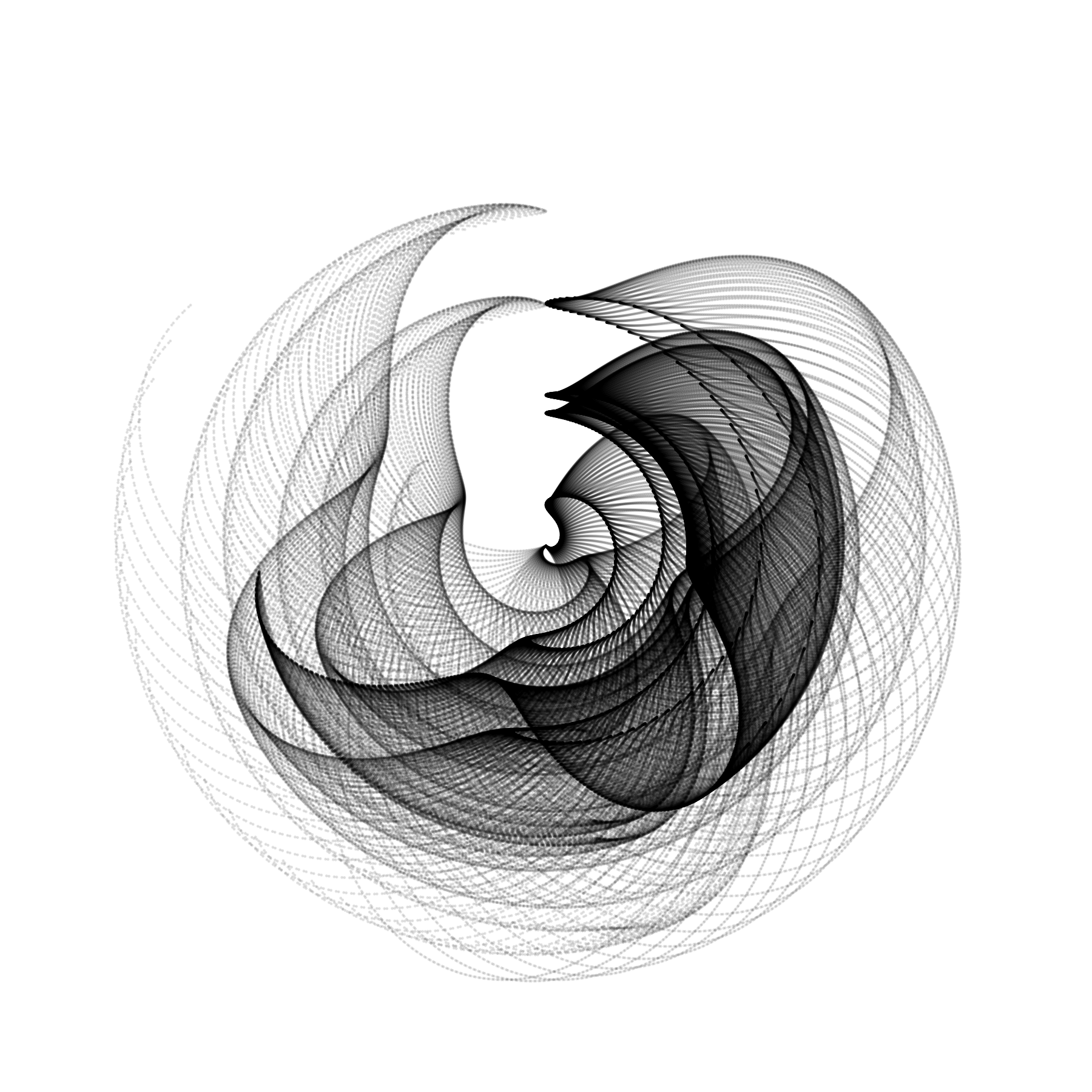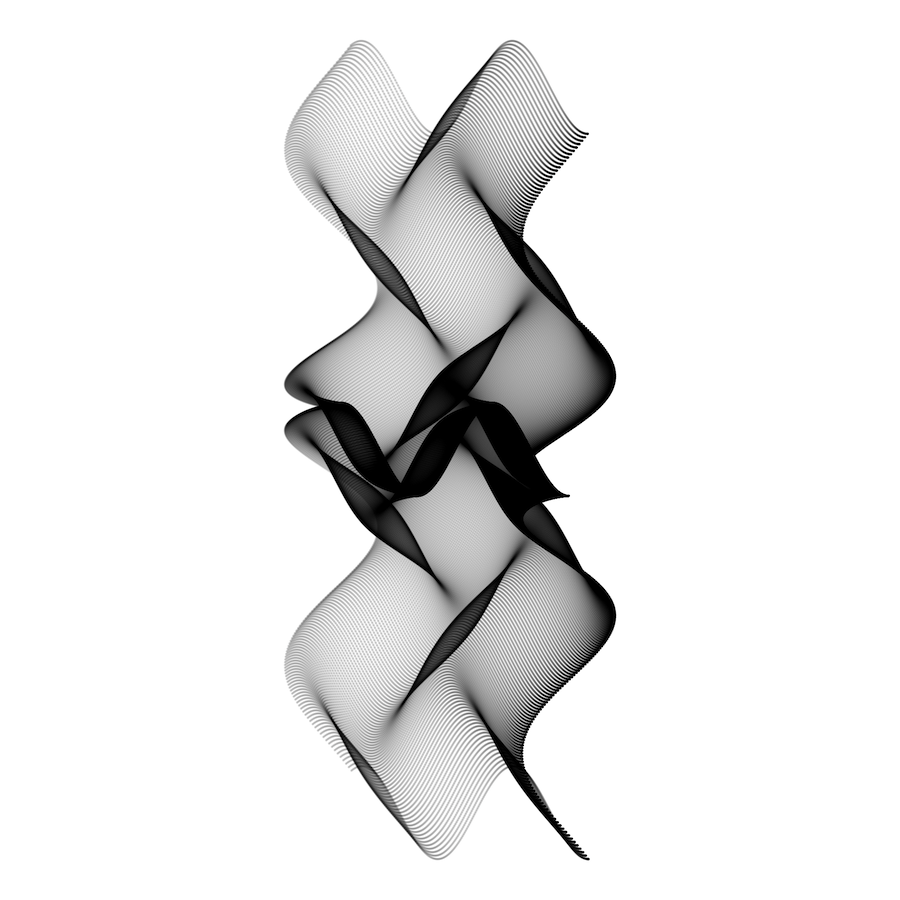cutterkom / Generativeart
Programming Languages
Labels
Projects that are alternatives of or similar to Generativeart
generativeart
Create Generative Art with R.
Description
One overly simple but useful definition is that generative art is art programmed using a computer that intentionally introduces randomness as part of its creation process. -- Why Love Generative Art? - Artnome
The R package generativeart let's you create images based on many thousand points.
The position of every single point is calculated by a formula, which has random parameters.
Because of the random numbers, every image looks different.
In order to make an image reproducible, generative art implements a log file that saves the file_name, the seed and the formula.
Install
You can install the package with the devtools package directly from Github:
devtools::install_github("cutterkom/generativeart")
generativeart uses the packages ggplot2, magrittr, purrr and dplyr.
Usage
The package works with a specific directory structure that fits my needs best.
The first step is to create it with setup_directories().
All images are saved by default in img/everything/. I use img/handpicked/ to choose the best ones.
In logfile/ you will find a csv file that saves the file_name, the seed and the used formula.
library(generativeart)
# set the paths
IMG_DIR <- "img/"
IMG_SUBDIR <- "everything/"
IMG_SUBDIR2 <- "handpicked/"
IMG_PATH <- paste0(IMG_DIR, IMG_SUBDIR)
LOGFILE_DIR <- "logfile/"
LOGFILE <- "logfile.csv"
LOGFILE_PATH <- paste0(LOGFILE_DIR, LOGFILE)
# create the directory structure
generativeart::setup_directories(IMG_DIR, IMG_SUBDIR, IMG_SUBDIR2, LOGFILE_DIR)
# include a specific formula, for example:
my_formula <- list(
x = quote(runif(1, -1, 1) * x_i^2 - sin(y_i^2)),
y = quote(runif(1, -1, 1) * y_i^3 - cos(x_i^2))
)
# call the main function to create five images with a polar coordinate system
generativeart::generate_img(formula = my_formula, nr_of_img = 5, polar = TRUE, filetype = "png", color = "black", background_color = "white")
- You can create as many images as you want by setting
nr_of_img. - For every image a seed is drawn from a number between 1 and 10000.
- This seed determines the random numbers in the formula.
- You can choose between cartesian and polar coordinate systems by setting
polar = TRUEorpolar = FALSE - You can choose the colors with
color = 'black'andbackground_color = 'hotpink' - You can save the output image in various formats.
Default is
png, the alternatives are defined by thedeviceoptions ofggplot::ggsave(). - the formula is a
list()
Examples
It is a good idea to use the sine and cosine in the formula, since it guarantees nice shapes, especially when combined with a polar coordinate system. One simple example:
my_formula <- list(
x = quote(runif(1, -1, 1) * x_i^2 - sin(y_i^2)),
y = quote(runif(1, -1, 1) * y_i^3 - cos(x_i^2))
)
generativeart::generate_img(formula = my_formula, nr_of_img = 5, polar = TRUE, color = "black", background_color = "white")
Two possible images:
The corresponding log file looks like that:
| file_name | seed | formula_x | formula_y |
|---|---|---|---|
| 2018-11-16-17-13_seed_1821.png | 1821 | runif(1, -1, 1) * x_i^2 - sin(y_i^2) | runif(1, -1, 1) * y_i^3 - cos(x_i^2) |
| 2018-11-16-17-12_seed_5451.png | 5451 | runif(1, -1, 1) * x_i^2 - sin(y_i^2) | runif(1, -1, 1) * y_i^3 - cos(x_i^2) |
Inspiration
The basic concept is heavily inspired by Fronkonstin's great blog.



